Way way back on the 27th of October 1986, Saab embarked on an endurance challenge to show the world just how good their new Saab 9000 Turbo was.
As with any new car produced by a manufacturer, the buying public are always wary of being the ‘guinea pig’ when it comes to new models, preferring to let others be the first to find out any shortcomings or problems before reaching for their cheque book.
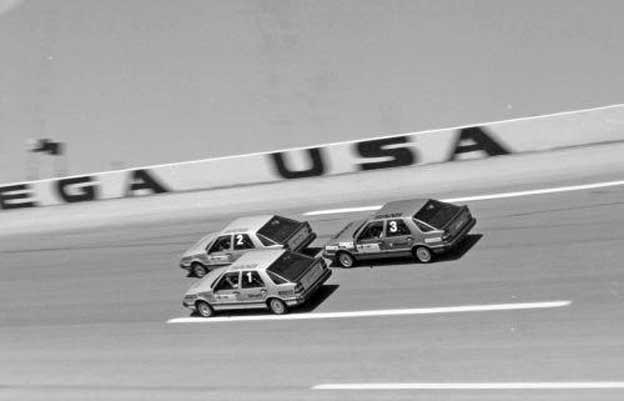
Confidence in a new model takes time, time the car manufacturer really doesn’t have.
This is why an endurance test such as the one Saab carried out at the Talladega speedway in Alabama USA was felt to be a good way to instil confidence in its new car (which was after all very different from the Saabs the existing core buyer was used to) and to show the motoring press just how good a car the 9000 was.
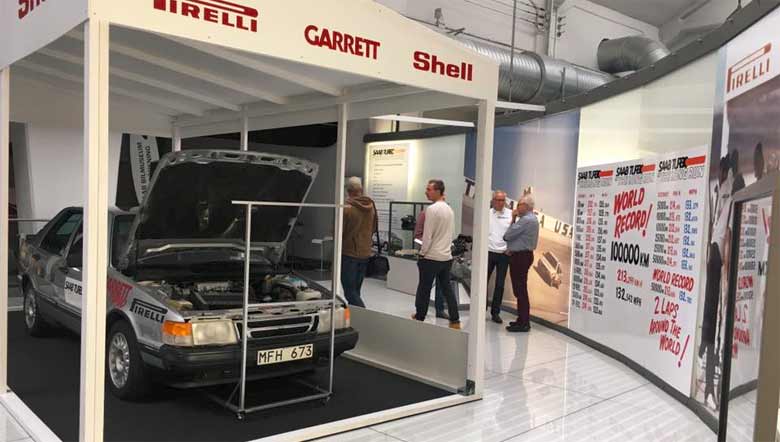
It turned out to be quite a challenge too. The distance ran was an amazing 62,000 miles (100,000km)at an average speed of 132mph (212 km/h) by three cars picked randomly from the production line with no modifications other than the fitting of role cages and a six point safety harness for the driver. During the test Saab managed to bag 21 international and 2 world records.
As we mentioned earlier, the cars were picked at random from the production line under the supervision of FISA (Federation Internationale Sportif Automobile) International motor sports authority, and were sealed prior to shipment to the USA.
International rules allowed 85kg of spare parts which were carried in a special aluminium case on the back seat, and only these parts could be used to repair the car during the test.
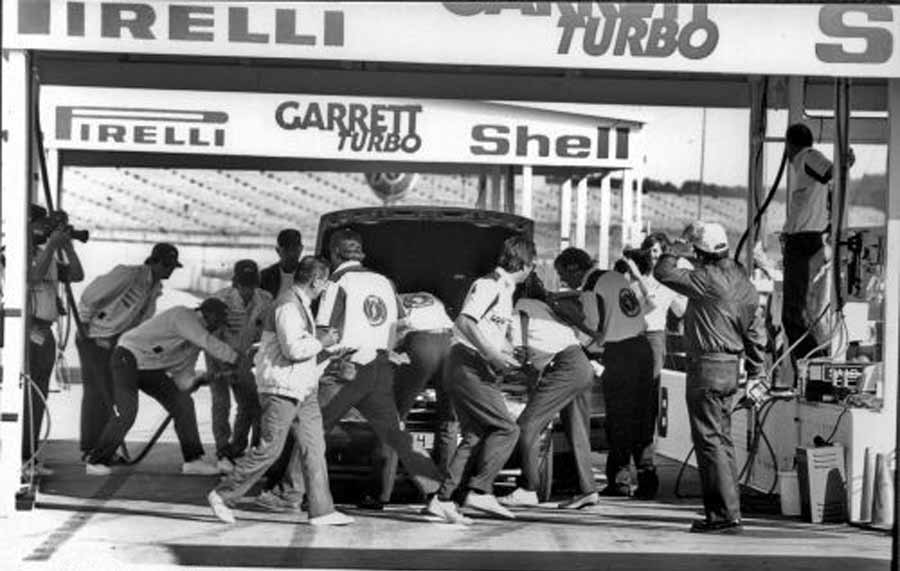
Obviously Saab couldn’t carry out such a mammoth test without help, so partners were sought, these being Shell, Pirelli, and Garrett. Pirelli supplied 400 P600 tyres, Shell made sure that approaching 100,000 litres of fuel and suitable quantities of lubricating oil was available, and Garrett supplied back up and expertise within the world of turbocharging.
So what about the test itself. Well, 25 drivers, most of them Saab engineers, took turns behind the wheel of the three test cars. Each car made a pit stop every hour for fuel, and every other hour for a driver change.
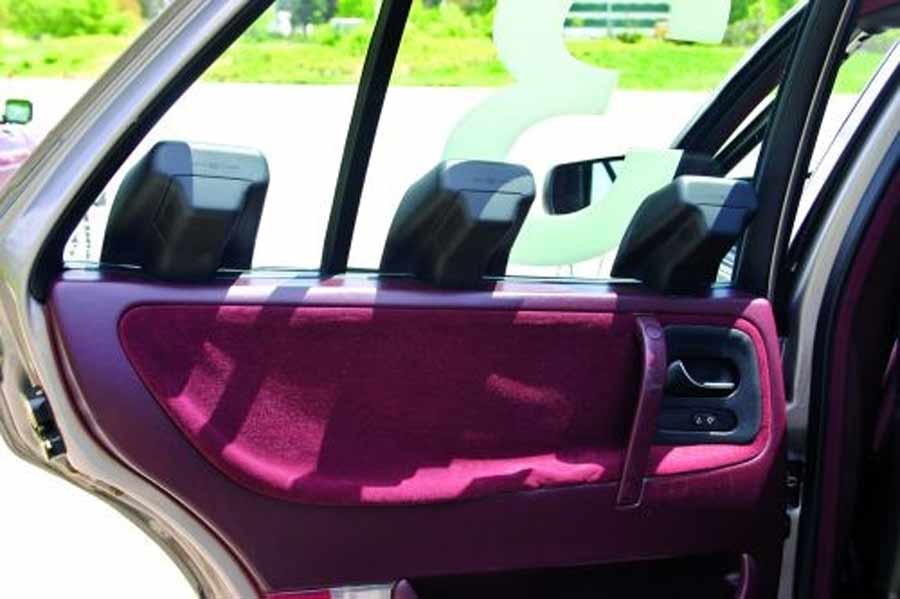
Front tyres were changed every 12 hours, and the rear tyres every 24 hours, with servicing carried out at the normal 12,000 mile intervals. The cars were driven constantly at 136mph, with pit stops reducing the average speed to 130mph. This equated to each car covering around 3000 miles a day for twenty days.
To conclude the ‘Long Run’ post we had a look at the repairs carried out on the cars to see how they had stood up to the gruelling test, often carried out in heavy rain and strong winds. Despite these difficult conditions the average speed never dropped. This was put down to the excellent all round abilities of the Pirelli P600 tyres and obviously the skill and confidence of the test drivers.
So what went wrong with the cars during the test?
So what went wrong with the cars during the test? Nothing much actually, the one thing Saab hadn’t given too much thought to was the steeply curved bank of the track. After a day, it was found that the engine was being starved of fuel when the level in the tank became low just before each fuel stop. It was found that sufficient allowance had not been made for the shifting of the fuel to the lower side of the tank, resulting in the fuel pump drawing in air, which in turn caused one exhaust valve in each car to burn out after 15 days.
The quickest remedy was to replace the complete head with the spare head carried in the car, and just in case any damage had been done to the turbochargers, these were replaced at the same time. However when checked at the end of the test the turbo chargers were found to be in near perfect condition, proving just how long these units would last in normal service (always one of the questions any potential owner was bound to ask) therefore making head replacement the only major repair to the cars.
The entire test was carried out under strict supervision. Laps were continually counted and timed, and all work carried out in the pit lane was closely scrutinised.
With the ‘Long Run’ completed the cars were completely stripped down, and the various components inspected and measured for wear.
The engines were taken back to the engine laboratory in Trollhattan, where all three engines were subsequently found to be in excellent condition, although Shell did find a small degree of impurities in the drained engine oil.
The gearboxes had also performed perfectly during the test. The oil never changed as the units according to Saab were ‘lubricated for life.’
No chassis components such as springs, shock absorbers, or wheel bearings needed to be replaced.
The brakes of course were little used, apart from high speed stops entering the pit lane, with each car coming in 500 times during the test. Remarkably only two of the cars needed the pads changing once, with the third car still on original pads at the end of the test.
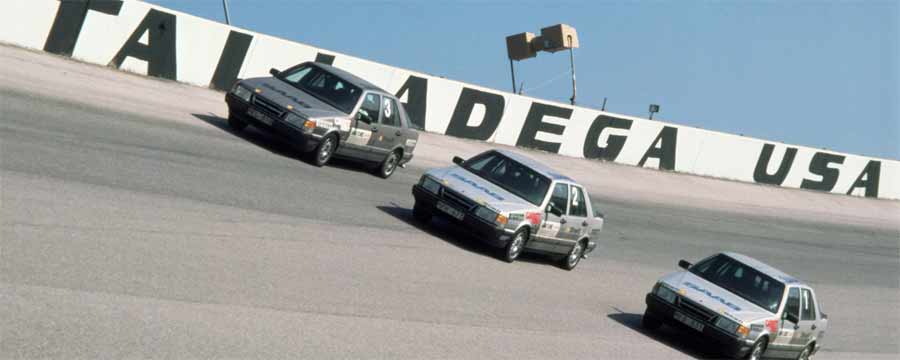
The most interesting thing about the test, other than showing just how good these cars were, is the damage done to the windscreens and headlamp glass. The dust kicked up from the track made by the three cars constantly driving round for hour after hour, day after day had ‘sandblasted’ the glass, making it very difficult to see through the windscreen, especially at sunset and in the mornings.
So there you have it, no need to be surprised anymore as to why your car ‘just goes on and on.’ Saab knew all along just how good their cars were.
Saab’s 1986 media information explains: “The cars were driven constantly at about 220 KPH [136.7 MPH], but the pit stops reduced the average speed to between 210 [130.5] and 215 KPH [133.6 MPH]. Each car covered a distance of 5,000 kilometers [3,107 miles] a day–which corresponds to driving from Sweden’s capital, Stockholm, to Rome and back.”

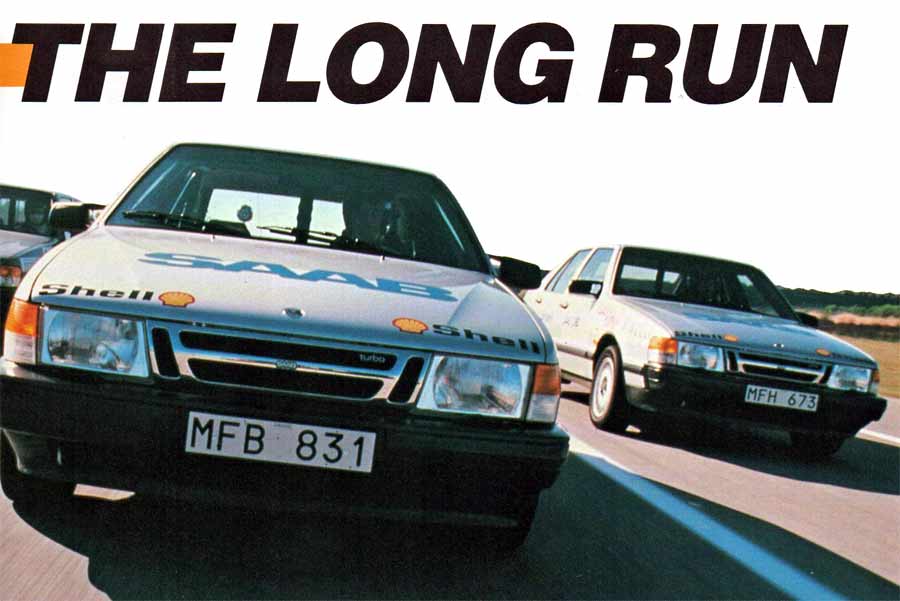










The # 3 Saab Long Run car is on display at the Saab Heritage Museum in Sturgis SD.
http://www.saabmuseumusa.com/
No one car as the Saab 9000 now i have an 1994 Aero here in Spain, y used 5 in my life, also BMW, Mercedes,,,, Saab was the best, no other car can be compared with the firts units of 9000s, 85-87.
It was a car like no other, luckily still have one in my garage, my wife use 2 , and my daughter also 1, both says is the best car .
Acording my notices no other brand tried to do the same as Saab, in Talladega, NO OTHER..
Today all cars are really scrap, long life to Saab 9000.